To master the Rate of Change (ROC) indicator, grasp its calculation method and select the ideal N value based on your trading style and risk tolerance. Analyze momentum strength, identify trends, and refine trading strategies using ROC. Evaluate cross signals and integrate with other indicators for thorough market analysis. By understanding ROC's nuances and leveraging its signals effectively, traders can make informed decisions for successful trading outcomes. Explore the potential of ROC by delving deeper into its applications and fine-tuning strategies for enhanced trading performance.
Understanding ROC Calculation
In the domain of technical analysis, the calculation of the Rate of Change (ROC) indicator serves as a pivotal method for evaluating momentum strength in financial markets.
The Rate of Change Indicator measures the percentage change in price over a specific period, providing insights into the momentum of a financial instrument. By comparing the current price to the price n periods ago, where n represents a customizable parameter, traders can assess the rate at which the price is changing.
When the ROC value is above zero, it indicates positive momentum, while values below zero signify negative momentum. This calculation allows traders to gauge the speed at which price changes are occurring, aiding in trend analysis and momentum identification.
Selecting the Optimal N Value
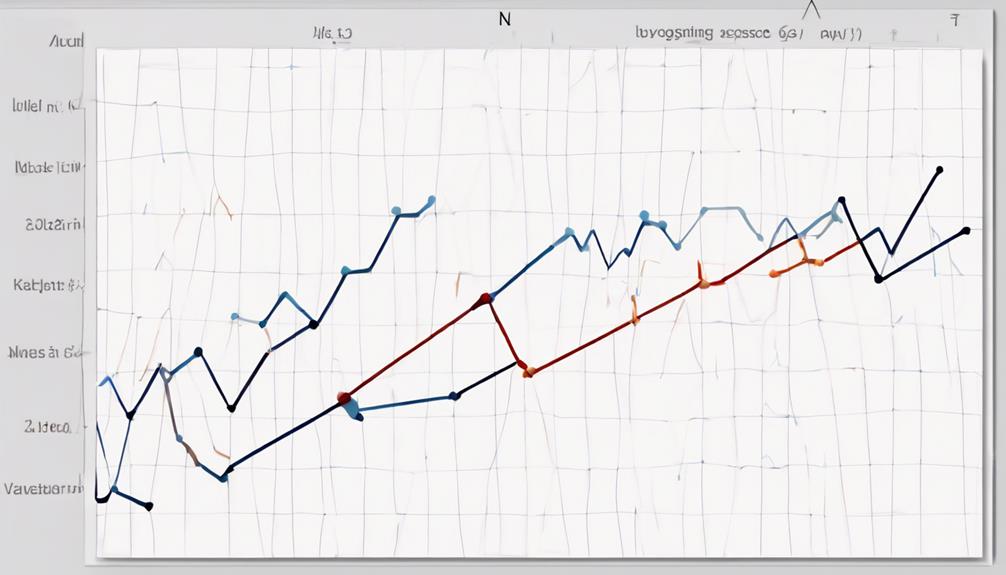
The selection of the ideal N value in the Rate of Change indicator is essential for traders seeking to fine-tune their trading signals.
By considering best N value strategies, tips for selecting the ideal N, and N value considerations, traders can enhance the effectiveness of their ROC analysis.
Careful evaluation of different N values based on trading style, timeframe, and risk tolerance is necessary for maximizing the utility of the Rate of Change indicator.
Optimal N Selection Tips
Effectively selecting the best N value for the Rate of Change Indicator involves careful consideration of trading strategy nuances and market dynamics. The most suitable N value varies depending on individual preferences and market conditions.
Traders often test different N values to strike a balance between signal responsiveness and smoothness. Shorter N values yield more responsive signals but can introduce noise and false signals. Conversely, longer N values offer smoother signals but might lag in capturing swift price changes.
To determine the most appropriate N value, traders should conduct thorough testing and adjustments aligned with their specific trading goals. Finding the right N value is essential for maximizing the effectiveness of the Rate of Change Indicator within a trading strategy and adapting to evolving market conditions.
Best N Value Strategies
Utilizing a systematic approach to determining the most suitable N value is essential for optimizing the effectiveness of the Rate of Change Indicator within a trading strategy. The N value in the ROC indicator plays a vital role in shaping the signals generated.
Traders must consider the trade-off between signal responsiveness and smoothness when selecting an N value. Experimentation with different N values allows traders to tailor the indicator to their specific needs and preferences.
Adapting the N value based on market conditions and asset volatility can greatly enhance the ROC indicator's ability to identify price momentum shifts accurately. Hence, a thoughtful selection of the N value is paramount in maximizing the utility of the Rate of Change Indicator in predicting and responding to price movements effectively.
N Value Considerations
Considering the dynamic nature of market conditions, selecting the best N value for the Rate of Change Indicator necessitates a strategic approach rooted in precision and adaptability. When choosing the N value for the ROC indicator, traders should keep in mind the following considerations:
- The N value determines the number of periods used for calculating percentage price changes.
- Experimentation with different N values is common to find the most suitable setting for a trading strategy.
- Shorter N values offer more responsive signals to price changes.
- Longer N values provide smoother signals.
- The selected N value greatly impacts the ROC indicator's sensitivity to price movements.
Ensuring the alignment of the ROC indicator with the desired trading timeframe and objectives hinges on selecting the right N value.
Using Closing Prices for Calculation
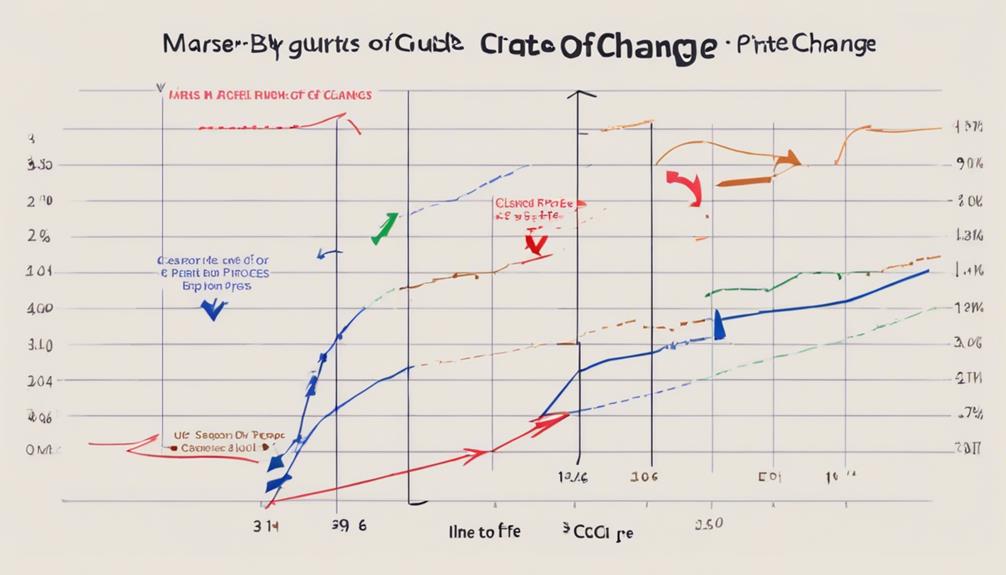
Utilizing closing prices in Rate of Change (ROC) calculations is paramount for precision in evaluating price momentum.
By subtracting the closing price n periods ago from the current closing price, the ROC indicator accurately reflects price changes.
Traders can leverage these calculations to interpret price momentum effectively for informed trading decisions.
Importance of Closing Prices
When calculating the Rate of Change indicator, the reliance on closing prices is vital for maintaining consistency and accuracy in measuring price changes over specific periods.
- Closing prices are essential as they compare the current price to the previous period's close.
- Using closing prices guarantees consistency and accuracy in ROC calculations.
- The ROC formula hinges on the difference between the current closing price and the closing price n periods ago.
- Closing prices offer a standardized reference point for ROC calculations.
- Focusing on closing prices helps traders interpret momentum and trend strength indicated by the ROC.
Calculation Accuracy Tips
To enhance the accuracy of Rate of Change (ROC) calculations, utilizing closing prices as the basis for measurement is essential for ensuring consistency and reliability in evaluating price changes over defined time frames.
The Price Rate Of Change indicator relies on the percentage change in price, which makes the precision of calculations vital for effective trading strategies. By using closing prices, traders have a stable reference point that standardizes the calculation method, enabling them to compare ROC values accurately across different assets or time periods.
This accuracy in ROC calculation is fundamental for making informed decisions in the financial markets, as even small discrepancies in calculations can lead to significant differences in interpreting price movements.
Interpretation for Trading
The interpretation of trading dynamics using closing prices for Rate of Change (ROC) calculations is pivotal in understanding market sentiment and momentum shifts.
- ROC measures percentage changes in price using closing prices for accurate analysis.
- Positive ROC values indicate buying pressure, while negative values suggest selling pressure based on closing prices.
- Zero-line crossovers in ROC can signal potential trend changes, providing insights into market momentum shifts.
- Divergence signals in ROC, when confirmed with other indicators, offer early indications of trend reversals.
- ROC calculations using closing prices help traders assess price momentum strength, enabling them to make informed trading decisions.
Interpreting Momentum Strength
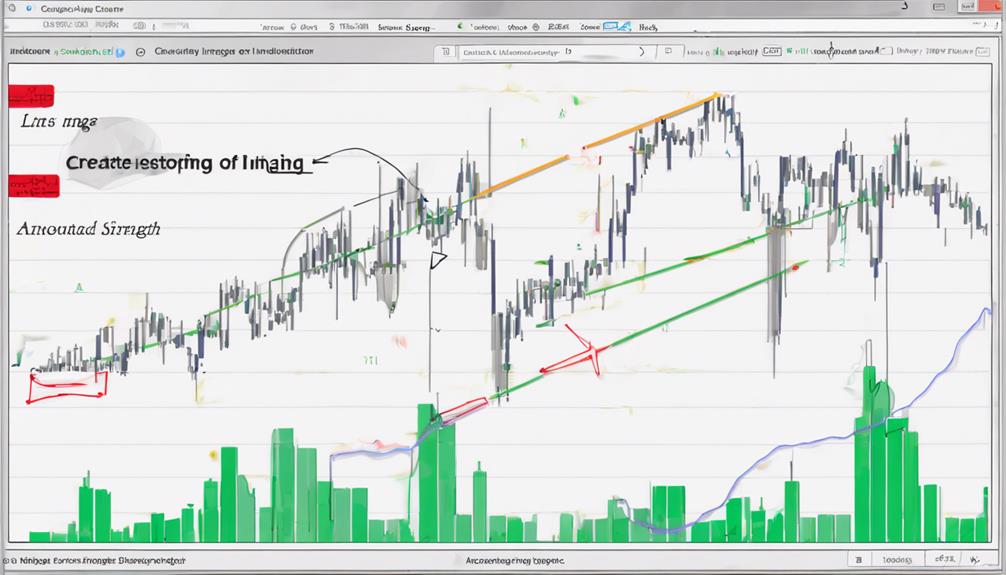
Momentum strength, as indicated by the Rate of Change (ROC) indicator, is a critical factor in evaluating the speed and magnitude of price movements in financial markets. The ROC helps traders gauge the intensity of market momentum, providing insights into the trend strength and potential changes in price direction.
Positive ROC values typically signify buying pressure and an uptrend, while negative values indicate selling pressure and a downtrend. Traders use ROC to confirm the strength of a price trend, enabling them to make well-informed trading decisions. ROC values above zero suggest positive momentum, below zero indicate negative momentum, and those around zero imply a lack of clear market direction.
Confirming Trends With ROC
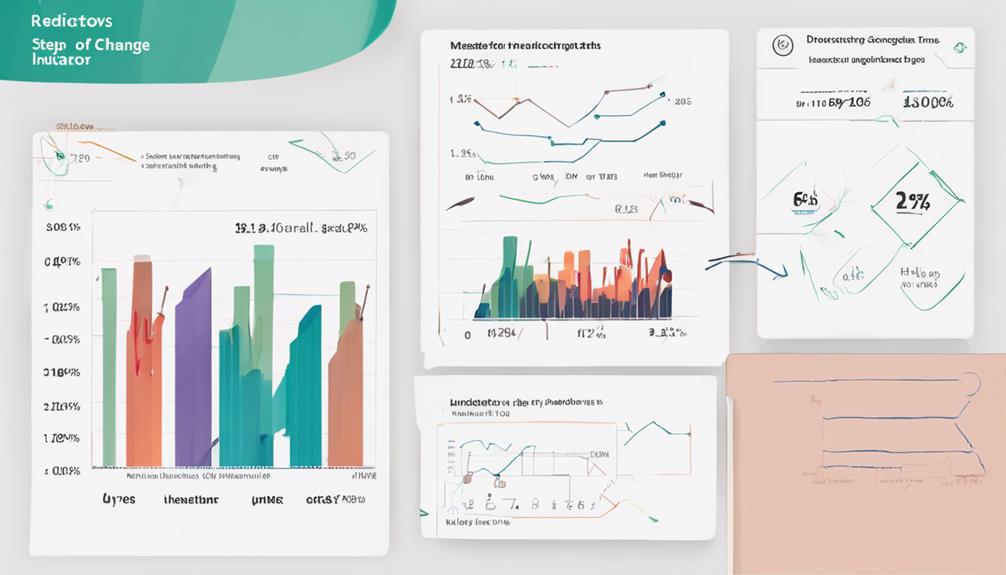
ROC serves as a valuable tool for confirming trends by analyzing the rate of price change. Traders rely on ROC to assess market momentum shifts and determine trend strength.
Understanding how ROC values indicate positive or negative momentum can help traders make informed decisions regarding market direction.
Trend Confirmation Technique
Utilizing the Rate of Change Indicator as a tool for confirming trends involves monitoring the indicator's direction to validate the prevailing market sentiment. When confirming trends with ROC, consider the following:
- Watch for the ROC rising in uptrends and falling in downtrends.
- Positive ROC values signal bullish trends, while negative values signify bearish trends.
- Trend confirmation with ROC aids in validating price movement directions.
- ROC's position in relation to the zero line indicates trend strength and direction.
- ROC serves as a useful tool for evaluating momentum and trend sustainability in the market.
ROC for Trend Analysis
When analyzing market trends using the Rate of Change Indicator (ROC), traders rely on its measurement of price change rates over specific periods to confirm the prevailing market sentiment. Positive ROC values indicate upward momentum and potential uptrends, while negative values suggest downward momentum and possible downtrends.
By utilizing ROC, traders can validate the significance and direction of existing market trends, helping them make informed trading decisions. Additionally, ROC assists traders in identifying potential trend reversals, signaling shifts in market sentiment.
This analytical tool plays a vital role in evaluating the sustainability of price movements, providing traders with valuable insights into market dynamics and aiding in the identification of profitable trading opportunities.
Identifying Market Direction
Confirming market trends through the Rate of Change Indicator (ROC) involves evaluating whether the indicator is above or below zero to determine bullish or bearish momentum, respectively.
- ROC confirms bullish trends when above zero and bearish trends when below zero.
- Rising ROC values indicate increasing momentum in the market direction.
- Falling ROC values suggest weakening momentum in the current trend.
- Traders use ROC to validate the strength and sustainability of price movements.
- Combining ROC signals with other technical analysis tools can enhance trend confirmation accuracy.
Analyzing the rate of price change with ROC can provide valuable insights into market direction and help traders make informed decisions based on momentum indicators.
Identifying Overbought Conditions
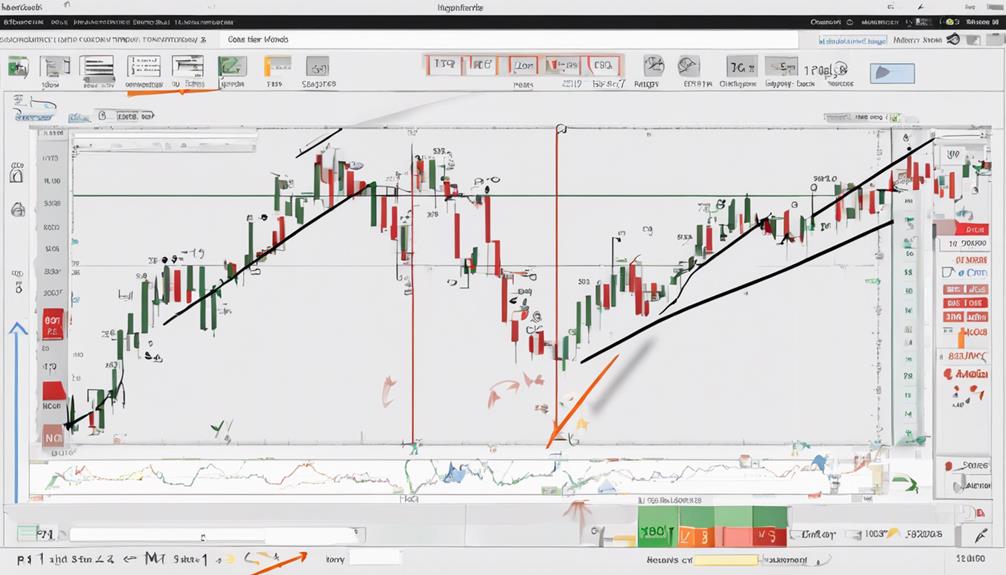
Identifying overbought conditions through the Rate of Change indicator is vital for traders seeking to anticipate potential reversals or temporary pauses in uptrends. Overbought conditions typically occur when the ROC indicator displays values exceeding a predefined threshold, commonly set at 70 or 80.
Traders interpret these elevated ROC levels as potential signals for a reversal or a temporary halt in the ongoing uptrend. Recognizing overbought levels on the ROC indicator is essential as it can help traders foresee a potential price correction or a shift in market sentiment. These levels suggest an overabundance of buying pressure and may indicate a possible exhaustion of the current uptrend.
To make more informed trading decisions, traders often combine overbought signals on the ROC indicator with other technical analysis tools. This strategic approach enhances the overall effectiveness of trading strategies by providing additional confirmation and insight into market conditions.
Spotting Trend Reversals
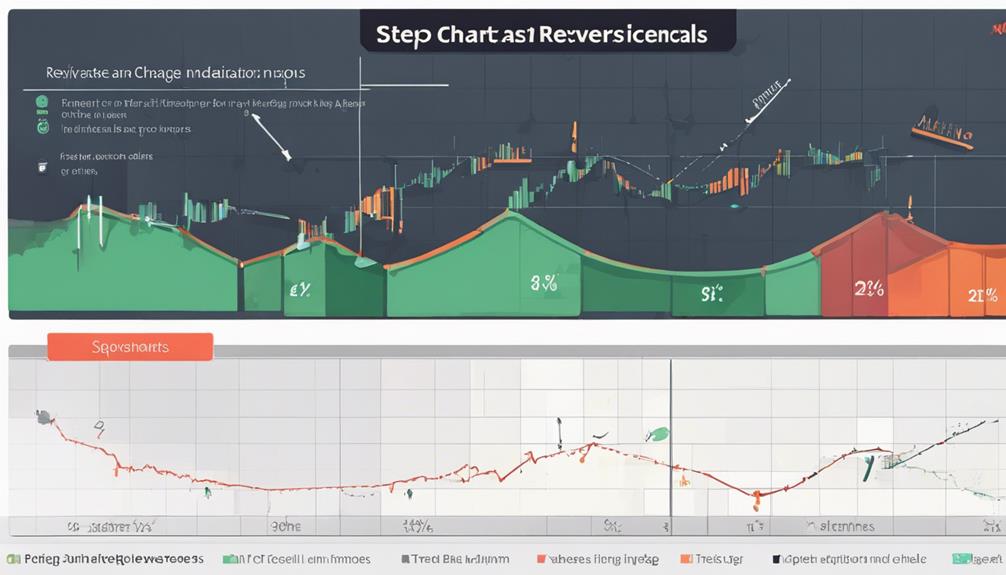
To effectively anticipate potential changes in market direction, traders can utilize the Rate of Change indicator to identify trend reversals by observing ROC values crossing above or below the zero line. When spotting trend reversals, traders should pay close attention to the following key points:
- Price Chart Analysis: Combine ROC signals with price chart patterns to confirm potential trend reversals effectively.
- Bearish Divergence: Watch for bearish divergence between price movements and ROC values as a warning sign of an upcoming trend reversal.
- Confirming ROC Acceleration or Deceleration: Changes in the speed of ROC values can indicate shifts in market sentiment and potential trend reversals.
- Utilize Other Technical Indicators: Enhance the reliability of trend reversal signals by corroborating ROC findings with other technical indicators.
- Risk Management Strategies: Implement stop-loss orders and risk management techniques to protect against false signals and manage potential losses effectively when trading based on ROC trend reversal indications.
Zero-line Crossovers and Divergence Signals

Zero-line crossovers and divergence signals in the Rate of Change indicator play an essential role in signaling potential trend changes and market sentiment shifts. Zero-line crossovers occur when the ROC crosses above or below the zero level, providing vital insights into market momentum. A bullish signal is generated when the ROC crosses above zero, indicating upward momentum and a potential uptrend. Conversely, a bearish signal is triggered when the ROC crosses below zero, suggesting downward momentum and a potential downtrend.
Divergence signals in ROC are particularly significant as they reveal potential reversals in the market. When price action and ROC move in opposite directions, it signifies a shift in market sentiment and hints at a possible trend reversal. Traders leverage these zero-line crossovers and divergence signals in ROC to validate trends, anticipate reversals, and make well-informed trading decisions based on momentum shifts. By closely monitoring these signals, traders can enhance their ability to navigate changing market conditions effectively.
Recognizing Chart Patterns
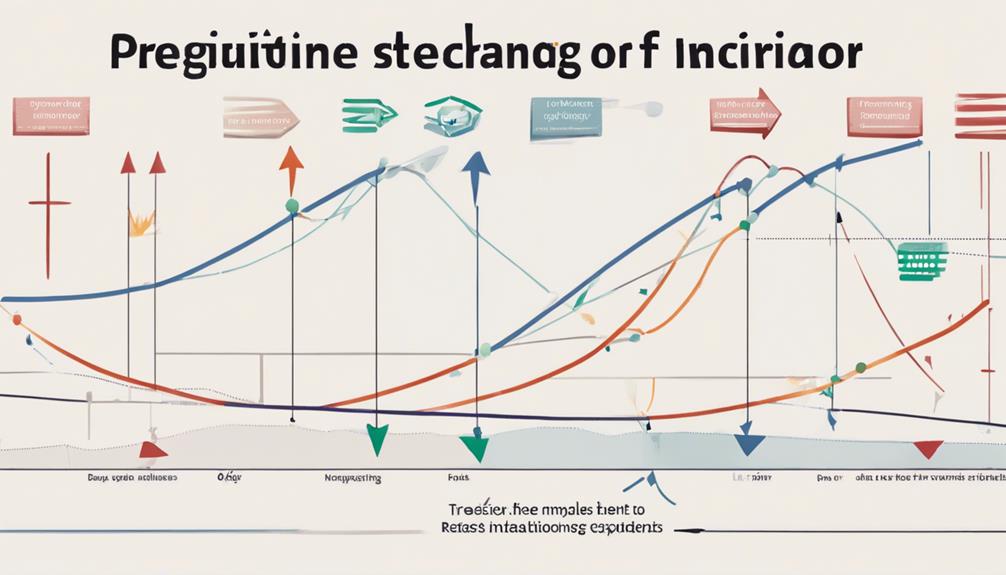
In the analysis of market trends and potential reversals, recognizing chart patterns is a fundamental skill that can be greatly enhanced through the utilization of the Rate of Change indicator. When combining chart patterns with the Rate of Change indicator, traders gain a more in-depth understanding of market dynamics. Here are five key points to keep in mind:
- Chart patterns such as head and shoulders, flags, pennants, and wedges can be identified using the Rate of Change indicator.
- The Rate of Change indicator aids in recognizing potential trend reversals and continuations based on chart patterns.
- Understanding patterns like head and shoulders or wedges can be improved by integrating them with Rate of Change signals.
- Golden Cross and Death Cross signals can be validated by incorporating the Rate of Change indicator with chart pattern analysis.
- Recognizing and interpreting chart patterns alongside the Rate of Change indicator can enhance trend analysis and inform better trading decisions.
Enhancing ROC Trading Strategy
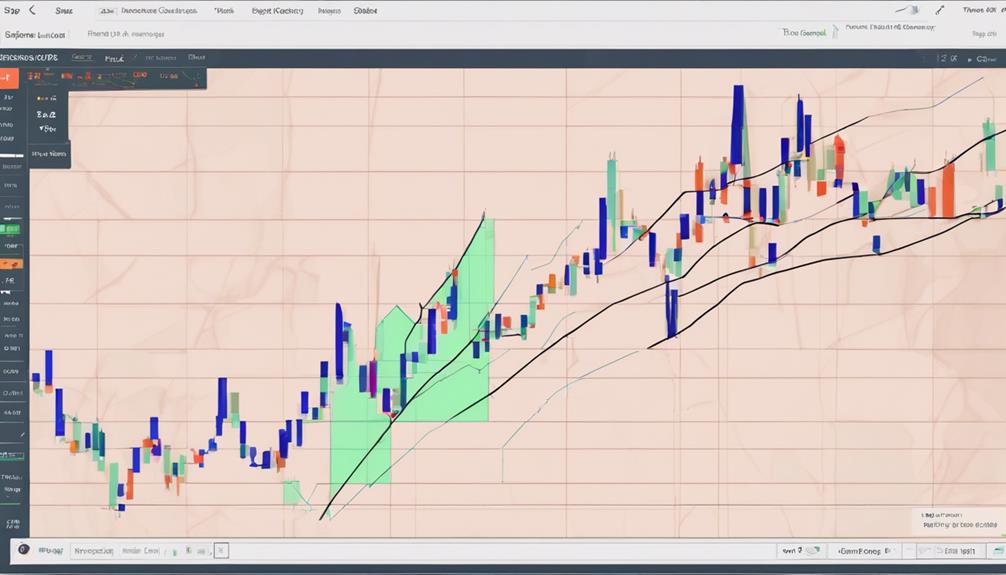
Enhancing the effectiveness of a ROC trading strategy involves strategic adjustments to the period settings in alignment with the preferred trading timeframe.
When conducting technical analysis using the Rate of Change (ROC) indicator, traders should pay close attention to the histogram bars' sizes and directions to assess trend strength accurately. Positive histogram bars on the ROC indicate an uptrend, while negative bars suggest a downtrend, providing potential trade signals.
Additionally, monitoring the acceleration of histogram bars can help identify possible trend reversals. To further enhance trading decisions, combining ROC analysis with the evaluation of support and resistance levels can offer a thorough view of the market dynamics.
Cross Signals Analysis
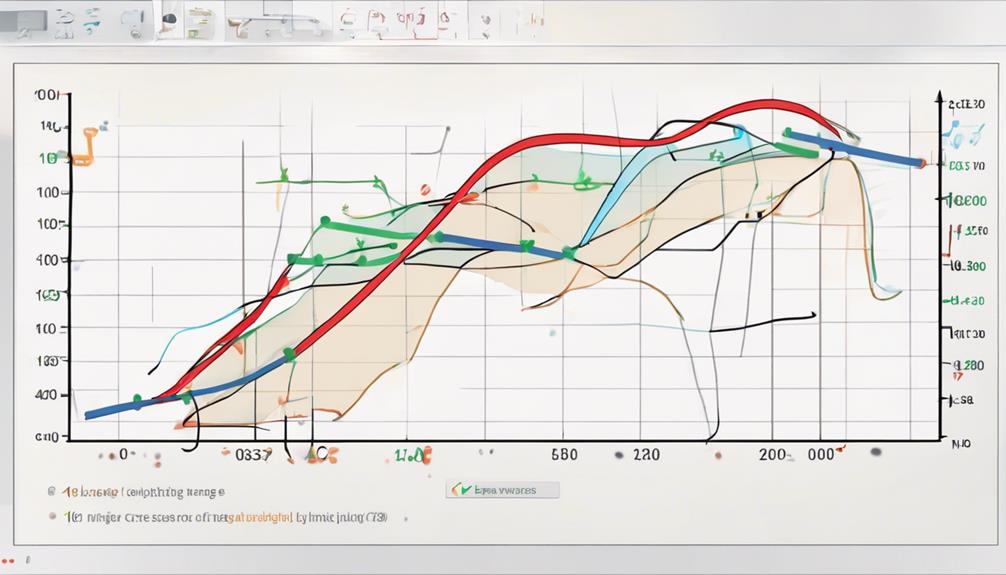
When analyzing the Rate of Change (ROC) indicator, an important aspect to ponder is the occurrence of cross signals, which indicate shifts in momentum based on the indicator line's movement across the zero line. Cross signals in the ROC indicator play a vital role in identifying potential trading opportunities and understanding market dynamics.
Here are some key points to keep in mind:
- Bullish and Bearish Signals: ROC crossing above the zero line generates a bullish signal, indicating positive momentum, while crossing below the zero line triggers a bearish signal, signaling negative momentum.
- Confirmation with Other Indicators: Traders often combine cross signals with other technical indicators to validate trend reversals or continuation patterns effectively.
- Context is Key: It is essential to take into account the broader market context and specific asset characteristics when interpreting cross signals accurately.
- Price to the Price Comparison: Analyzing how the ROC indicator's movements relate to the price action can provide valuable insights into market sentiment.
- Weighted Moving Average Integration: Incorporating a Weighted Moving Average can help smooth out ROC signals, reducing noise and enhancing signal clarity.
Mastering cross signals analysis in the ROC indicator requires a thorough understanding of market dynamics and the interplay of technical indicators.
Utilizing Other Indicators
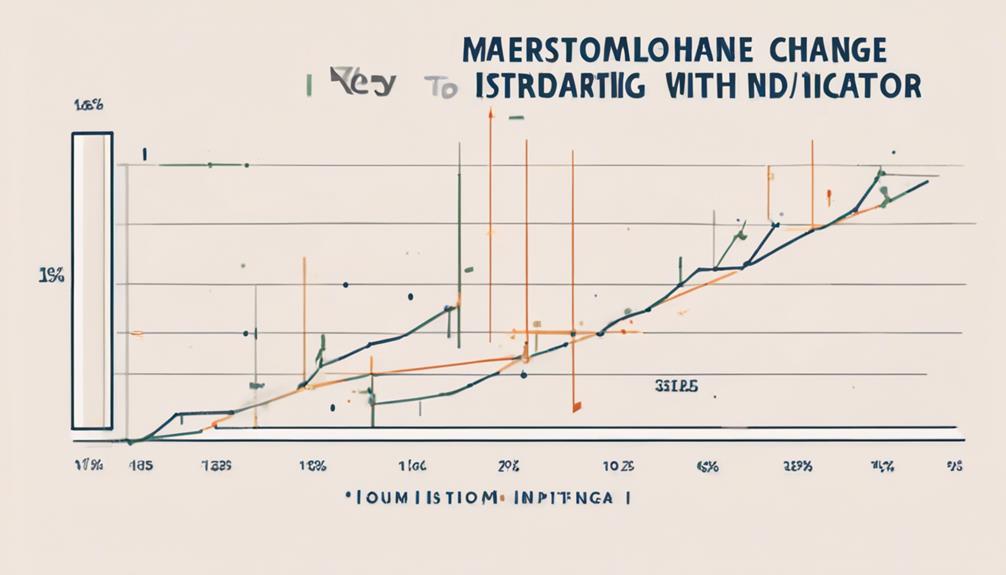
Integration of complementary indicators alongside the Rate of Change (ROC) indicator can greatly enrich the depth of market analysis and enhance trading strategies. When combined with moving averages, the ROC oscillator can confirm trend strength and direction, aiding traders in identifying potential entry and exit points.
Additionally, incorporating support and resistance levels in conjunction with the ROC indicator can further enhance trade decisions by providing valuable insights into potential price reversals or continuations. Volume analysis can also be used to validate ROC signals, offering traders a more detailed understanding of market dynamics.
Furthermore, integrating the Relative Strength Index (RSI) with the ROC indicator can provide a holistic view of market conditions, aiding in better decision-making processes. Pairing the ROC indicator with trendlines can offer additional confirmation of price movements and potential breakout points, further refining trading strategies and setting stop-loss levels effectively.
Making Informed Market Decisions
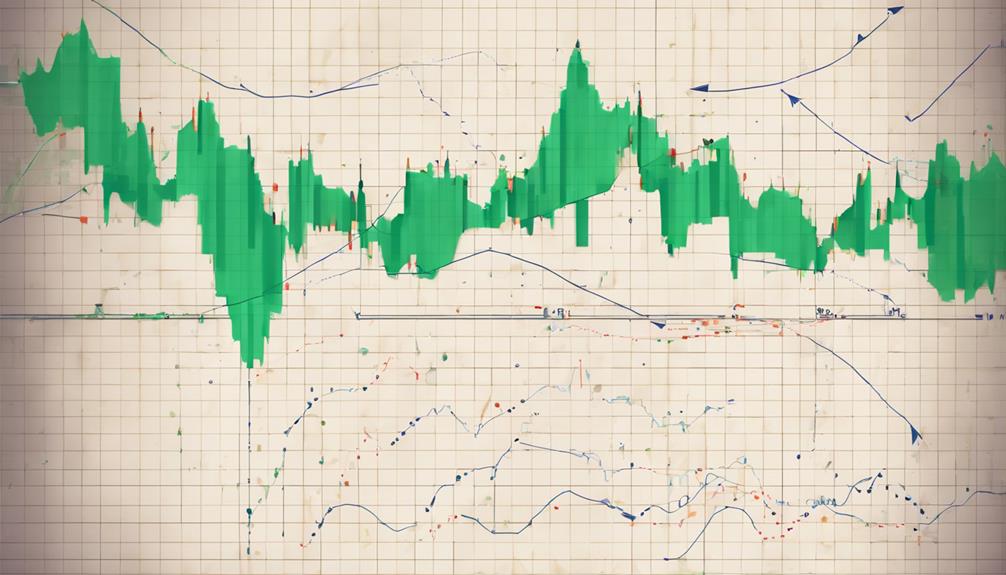
To navigate the complexities of the financial markets successfully, traders must rely on informed market decisions backed by robust analysis and strategic insight. When making decisions based on the Rate of Change (ROC) indicator, understanding the price n periods ago and interpreting ROC signals are essential for effective trading strategies.
- ROC Calculation: ROC calculates the percentage change in price over a specific period, offering insights into momentum shifts.
- Price Comparison: It compares the current price to the price n periods ago, providing a visual representation of trend acceleration or deceleration.
- Momentum Signals: Traders use ROC to identify bullish (ROC > 0) or bearish (ROC < 0) momentum signals for decision-making.
- Period Settings: Experimenting with different period settings can help traders tailor responsive or smoother ROC signals for analysis.
- Signal Confirmation: Combining ROC signals with other indicators like moving averages can enhance trend confirmation and refine trading decisions effectively.
Frequently Asked Questions
How Do You Calculate the Rate of Change Indicator?
To calculate the Rate of Change Indicator, subtract the price n periods ago from the current price, then divide this difference by the price n periods ago. Multiply the result by 100 to express it as a percentage.
Interpretation techniques involve identifying bullish momentum for ROC values above 0, bearish momentum for values below 0, and neutral momentum for values equal to 0.
Traders can customize the indicator by adjusting the number of periods for comparison.
How Can We Use Indicators to Measure Rate of Change?
In trend analysis, indicators play a vital role in measuring the rate of change by evaluating price movement over a specific period. These indicators provide valuable insights into the momentum strength of an asset, helping traders identify potential opportunities for entry or exit based on the direction and magnitude of price changes.
How Do You Use the ROC Indicator?
When utilizing the ROC indicator, traders analyze its interpretation and application for market insights. Understanding how ROC values signify bullish, bearish, or neutral momentum aids in decision-making.
Adjusting ROC settings allows alignment with diverse trading timeframes, enhancing analytical precision. Exploring variations in ROC calculations can offer deeper insights into price shifts.
Mastery of ROC interpretation and application empowers traders to gauge trend strength, anticipate reversals, and validate market directions effectively.
What Is the ROC Strategy?
The ROC strategy revolves around the Rate of Change indicator. It assesses price momentum by measuring percentage fluctuations over a defined period. This technique aids traders in spotting bullish or bearish signals, crucial for decision-making.
Adjusting the period setting influences signal responsiveness and smoothness. When combined with complementary indicators like moving averages, ROC signals can offer enhanced confirmation for strategic trading maneuvers.
Mastering this strategy can greatly elevate one's trading prowess.
Conclusion
To sum up, mastering the Rate of Change indicator requires a thorough understanding of its calculation, ideal N value selection, and interpretation of momentum strength. By confirming trends and enhancing trading strategies with ROC, traders can make informed decisions in the market.
Utilizing cross signals analysis and other indicators can further improve trading outcomes. Overall, becoming proficient in using ROC can lead to more successful trading endeavors, akin to mastering a valuable tool in a craftsman's arsenal.
